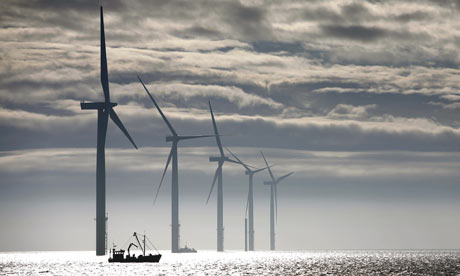Ever noticed a stormier weather in the past decades?
 In the past 20 years, scientists noticed that winds have picked up and more storms have strong winds which dramatically increase to about 5% on average and even faster, jumping 10% over 20 years, according to the new analysis of global satellite data. The study, the first to look at wind speeds across such a large swath of the planet, bolsters some earlier findings, according to study leader Ian Young, of the Swinburne University of Technology in Melbourne, Australia. (source: National Geographic News – Mason Inman).
In the past 20 years, scientists noticed that winds have picked up and more storms have strong winds which dramatically increase to about 5% on average and even faster, jumping 10% over 20 years, according to the new analysis of global satellite data. The study, the first to look at wind speeds across such a large swath of the planet, bolsters some earlier findings, according to study leader Ian Young, of the Swinburne University of Technology in Melbourne, Australia. (source: National Geographic News – Mason Inman)."Some regional studies had found similar results, so we suspected there may be an increasing trend," Young said.
With the development of satellite and radar technology, the planet's temperature and rainfall have been tracked like never before. Other aspects of the climate, however, haven't gotten as much attention. To create a record of wind measurements around the world, Young and colleagues assembled global satellite measurements dating back to 1985. The team drew on records from satellites that used radar altimeters, which work similarly to bats' echolocation, or natural radar. The orbiting satellites shoot radio waves at Earth and listen for the echoes that bounce back into space. When winds are blowing hard, the radar echoes are fainter, giving a measure of how strong the wind is blowing over the oceans (source: National Geographic News – Mason Inman).
This windy trend is being linked to global warming where the only way to explain the pattern is to include the effect of greenhouse gases (GHGs) emitted by humans. One of the first things scientists learned is that there are several greenhouse gases responsible for warming, and humans emit them in a variety of ways. Most come from the combustion of fossil fuels in cars, factories and electricity production. The gas responsible for the most warming is carbon dioxide, also called CO2. Other contributors include methane released from landfills and agriculture (especially from the digestive systems of grazing animals), nitrous oxide from fertilizers, gases used for refrigeration and industrial processes, and the loss of forests that would otherwise store CO2. Emissions have shown that this has greater and bigger impact on our everyday living including a windier environment during storms, rising sea level, and different climate pattern changes.
Around the world, the mercury is already up more than 1 degree Fahrenheit (0.8 degree Celsius), and you could see that our planet is warming dramatically from North to South Pole making it more difficult for us to cope especially with these bigger storms, hurricanes, earthquakes, volcanic eruptions. And the effects of rising temperatures are not just an imagination that our ancestors predicted many years ago. They’re happening right now. Signs are appearing all over, and some of them are surprising. The heat is not only melting glaciers and sea ice, it is also shifting precipitation patterns and setting animals and coral reefs on the move even extinct some of our endangered, rare species.
Other effects could happen later this century, if warming continues. Sea levels are expected to rise between 7 and 23 inches (18 and 59 centimeters) by the end of the century, and continued melting at the poles could add between 4 and 8 inches (10 to 20 centimeters). Hurricanes and other storms are likely to become stronger. Species that depend on one another may become out of sync. For example, plants could bloom earlier than their pollinating insects become active. Floods and droughts will become more common. Rainfall in Ethiopia
 Less fresh water will be available. If the Quelccaya ice cap in
Less fresh water will be available. If the Quelccaya ice cap in As from previous articles, governments from different countries are already working hard to cut greenhouse gas effects by finding alternative ways on energy efficiency and increases in wind and solar power, hydrogen produced from renewable sources, biofuels (produced from crops), natural gas, and nuclear power.
A windier weather is just one of the few things that this global warming has taken its toll on us and that we should be prepared on some other impacts of global warming in the future and perhaps get rid of some “old habits.”
Source for climate information: IPCC, 2007 (National Geographic News)

No comments:
Post a Comment